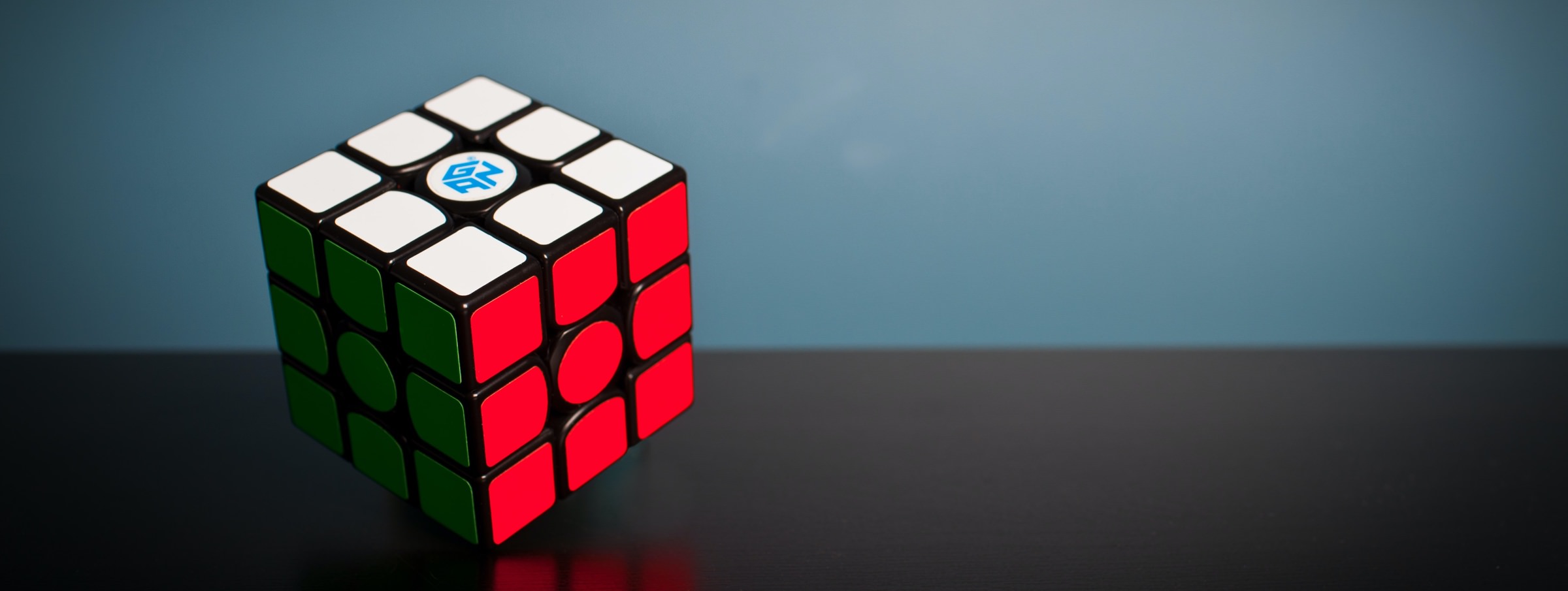The Puzzle That Will Make You More Productive
I recently learned how to solve a Rubik’s cube and was surprised to find that it became an asset in my professional productivity toolbox. Like many of you we have watched a documentary or ten during the pandemic. My sons and I came across The Speed Cubers and decided it would be fun for the three of us to learn how to solve a Rubik’s Cube. That led us to Wired’s article “How to Solve a Rubik’s Cube, Step by Step” which is fantastic. It took a few weeks of practice to get to the level of proficiency that I could solve the cube without my cheatsheet. A few more weeks after that I was able to get my solve times consistently under a minute.
How The Cube Increased Productivity
Once I got to the point of not needing a cheatsheet to solve the cube, I put it on my desk and found myself picking it up between meetings or when I took a break to knock out a solve. It still took a fair amount of mental effort. Eventually when I could solve it quickly and without a lot of active thought, it became a very cathartic exercise. I found myself reaching for it when working on a difficult problem and a getting a bump in progress on the solution. I have enjoyed this so much that now, most days when I sit down at my desk the first thing I do is knock out a solve. It gets my brain going and starts the day off with a win.
According to my sister Elizabeth Winings, DNP, ARNP, this can be explained by the behavioral momentum theory. It outlines the relationship between the completion of activities with a high probability of success leading to the increased probability of completing activities with a lower probability of success.
A word of caution, I would not start by throwing a cube straight into your work routine. Unless you are a savant that immediately memorizes all the patterns to solve, it will destroy your productivity. It took numerous evening and weekend practice sessions to memorize the patterns and movements required for proficiency. The tipping point where it became a net positive for productivity was when I could consistently solve without a cheatsheet in less than 2-3 minutes.
The Cube We Chose
We did our research on cubes and settled on the GAN 356RS. We demoed higher and lower end cubes and found this one to be a good middle ground for amateurs like us. We found the choppy action on the lower quality cubes to be distracting and frustrating. We also found the sticker-less cubes more ergonomically pleasing. On the higher end we checked out cubes enhanced with magnetic connections like the GAN 356M. These were very cool but the $34 price point was outside our predetermined $20 limit. If I had known how much I was going to enjoy it I would have gone with the 356M and might upgrade down the road. If price isn’t a concern there are highly customizable magnetic cubes over $60 that you can dial in to your exact, preferred movement action.
* None of these links are affiliate links. I have no relationship with GAN, they just happened to be the brand we settled on after our research.

